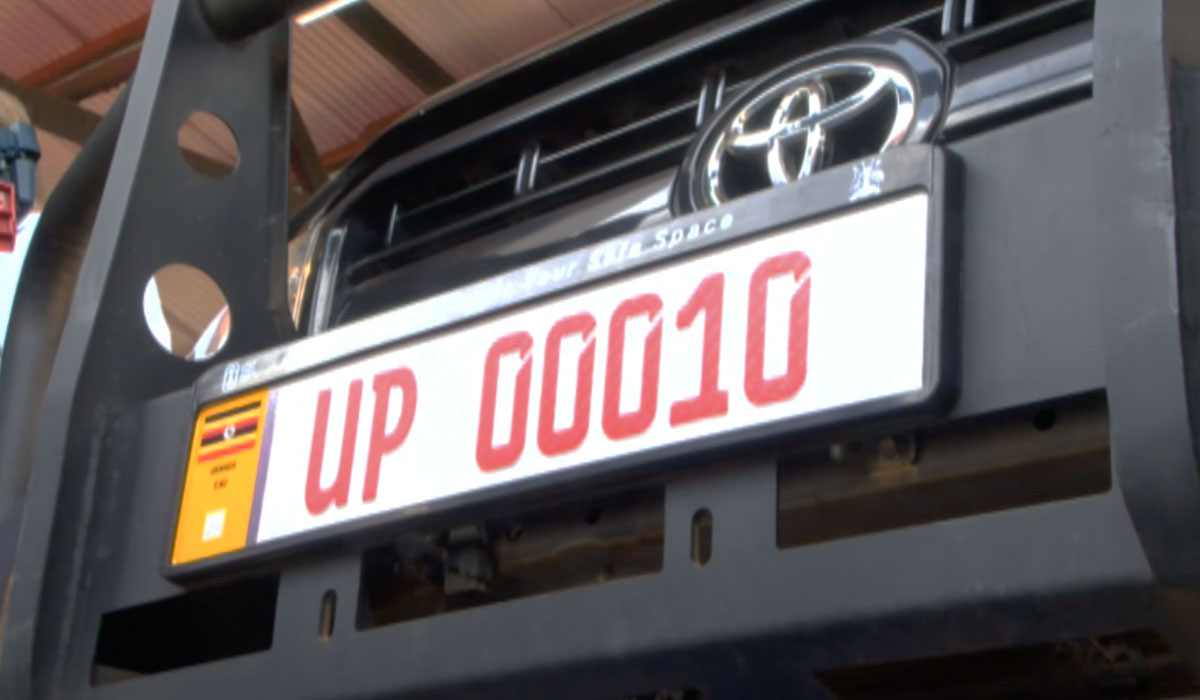
Over the past few years, the discussion around digital number plates in Uganda has sparked significant controversy. On one side, these number plates are seen as a move towards a more digitised and secure future, but on the other end, the expenses incurred to acquire one such number plate have led citizens to view the initiative skeptically. Despite the initial halt, the government is set to commence rolling out these advanced number plates in November 2024. But what exactly are these digital number plates, and what do they come with?
What Are Digital Number Plates? How Do They Work?
First off, digital number plates are not just the regular yellow plates we’ve been accustomed to, they are an upgrade designed to work within an Intelligence Transport Monitoring System (ITMS). Unlike traditional number plates, these come with a tracker, a SIM chip and Bluetooth beacons which collectively allow for real-time tracking and monitoring of vehicles.
Like the traditional number plates, these too will be mounted on both the front and back of the vehicle, accompanied by tracking technologies. They are said to replace the existing ones over the next two years with a phased approach starting with new motorcycles before expanding to vehicles.
That said, what are the benefits of these digital number plates? Are they worth the investment? Well, one of the major advantages is reducing vehicle-related crimes like theft by utilising the tracking capabilities of these plates. By also utilising the ITMS, a network equipped with road cameras and sensors, these new number plates are aimed at monitoring traffic flow, identifying and tracking vehicles and detecting incidents in real-time.
Digital Number Plates in Uganda – Rollout Plan
However, even with this great advantage over the existing number plates, the rollout of the digital plates was met with delays and challenges. Initially, the rollout was scheduled for March 1, 2024, but logistical challenges and the global political instabilities, especially the Russia-Ukraine conflict, caused delays. These, in turn, disrupted the supply chain with delayed delivery of necessary components, pushing the start date to July 1 and then to November 1, 2024.
Moreover, public awareness and readiness were cited as concerns. The Kampala City Traders Association (KACITA) petitioned parliament to delay the rollout, arguing that the public was not adequately informed about the new system. They suggested that the initiative begin with government vehicles as a trial phase. This approach was deemed necessary to ensure the smooth adoption of the technology and to address any potential issues before a full-scale rollout to the public.
Now, with the stage set for November, the government says it’s ready to commence the installation of digital number plates. The initial focus will be on new motorcycles and later expanding to all vehicles by January 2025. The phased rollout is designed to ensure that the infrastructure and logistics are in place to support the widespread adoption of the new system.
To further facilitate this rollout, the government has established production facilities in Kampala to manufacture the new number plates. This local production capacity is expected to meet the demand of over 2.2 million vehicles, thereby ensuring a steady supply of digital plates as the transition progresses.
As a future projection, the government aims to integrate these digital number plates with other national systems such as the motor vehicle registration system, e-tax system and the National Identification and Registration Authority (NIRA) databases. This integration will create a comprehensive vehicle and personal identification framework where every person’s data is linked. All their information has been collected.
Benefits of The New System
While the journey to digital number plates in Uganda has been fraught with challenges, it seems this time the government is ready to take on the task. The benefits they promise—enhanced security, improved traffic management and greater road safety—make them a worthwhile investment, but the question remains, …are Ugandans ready to transition to this new number plate system?

1 thought on “Digital Number Plates in Uganda: How they work, costs, & 2025 Rollout”
To my observation,they are not ready because very few know the benefits of digital number plates.My advise is to teach them.
Thanks